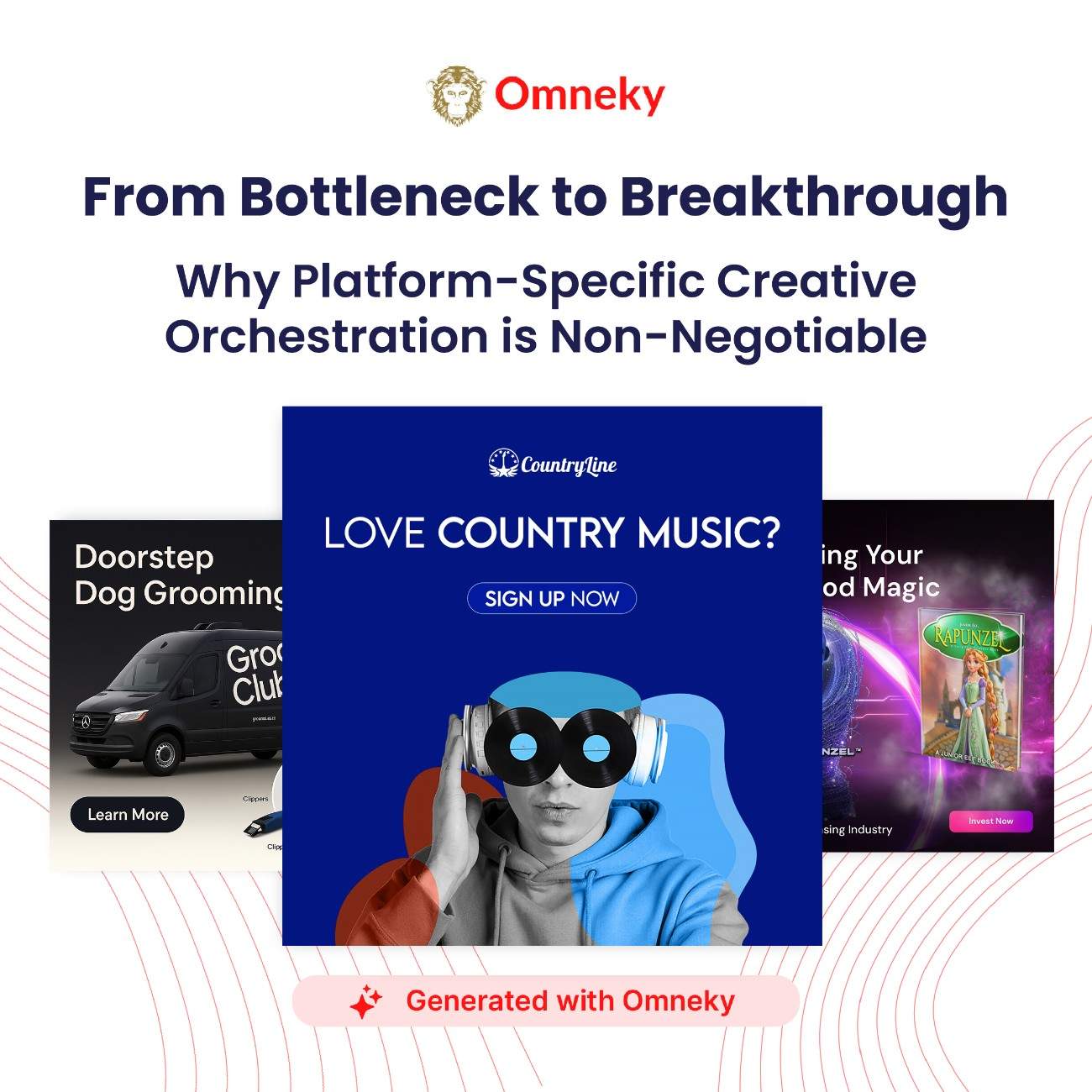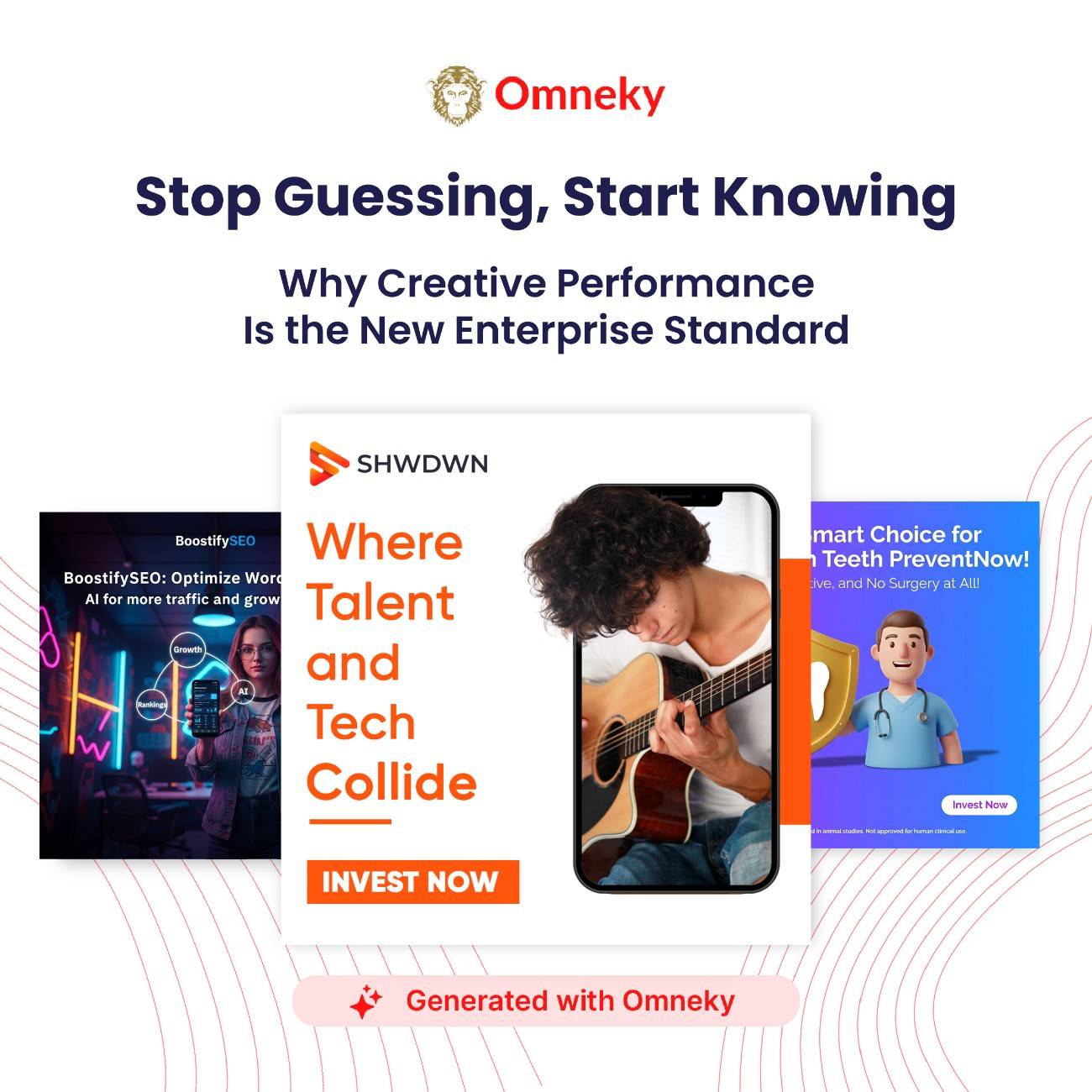From Bottleneck to Breakthrough: Why Platform-Specific Creative Orchestration is Non-Negotiable
This shift has turned a workflow inconvenience into a critical business bottleneck. The demand for rapid, platform-specific creative orchestration is no longer a "nice-to-have." It is a must-have for survival and growth.

From Bottleneck to Breakthrough: Why Platform-Specific Creative Orchestration is Non-Negotiable
The days of "one-size-fits-all" creative are over.
For years, marketing teams have operated on a broken model: design one hero creative, then manually (and painfully) chop, resize, and adapt it for every other channel. That repurposed YouTube ad was squeezed into an Instagram Story. That static banner was begrudgingly posted to LinkedIn. This "nice-to-have" approach to platform-specific content was considered good enough.
Today, "good enough" is a recipe for failure.
Your audience isn't just on one platform; they are fragmented across Meta, TikTok, LinkedIn, YouTube, and countless others. And they don't just prefer native content—they expect it. A user scrolling TikTok will instantly skip a jarring, repurposed ad, but they’ll engage with a video that feels like a TikTok.
This shift has turned a workflow inconvenience into a critical business bottleneck. The demand for rapid, platform-specific creative orchestration is no longer a "nice-to-have." It is a must-have for survival and growth.
The Manual Tax: Drowning in Renders and Resizes
Modern marketing teams are asking for a solution because they are drowning in manual tasks. Their creative teams are bottlenecked, and their performance is suffering.
The demand list from brand managers and performance marketers is clear and urgent:
- Platform-Tailored Formats: They need to stop resizing and start re-composing. A 9:16 TikTok, a 1:1 Meta carousel, a 4:5 feed post, and a 16:9 YouTube ad are fundamentally different canvases.
- Constant, Automated Refreshes: Ad fatigue is the enemy of performance. Teams need to refresh creative concepts weekly, if not daily, which is impossible to do manually at scale.
- Feed-Driven Creatives: E-commerce and retail brands need ads that connect directly to their product catalogs (like Shopify), automatically pulling in the latest products, prices, and promotions.
- Dynamic Elements: The ability to add adaptive video, dynamic overlays (like "Free Shipping" or "24-Hour Sale"), and localized content is crucial for relevance.
- A Centralized Workflow: Teams are tired of juggling spreadsheets, email chains, and disconnected asset folders. They want a single source of truth.
- Seamless Integrations: The creative process must talk to the rest of the stack, from DAMs (Digital AssetManagement) to the ad managers themselves, complete with perfect naming conventions for clean tracking.
When you do this manually, you pay a "manual tax" in time, money, and performance. When you use AI and orchestration, you create a competitive advantage.
The Solution: The "One-Brief-to-Many-Placements" Revolution
The only way to meet this demand is to move from manual adaptation to intelligent orchestration. This is the new standard.
Imagine a "one-brief-to-many-placements" workflow. A marketer provides a single brief, a core message, and a set of assets. From there, an orchestration engine (like Omneky) doesn't just resize—it intelligently generates hundreds of platform-native variants.
This is how it works:
- Intelligent Layouts: The system understands the context of each platform. It provides automatic aspect ratio and layout recommendations, re-composing elements for maximum impact on every screen.
- Feed-to-Creative Pipelines: It connects directly to your Shopify store, product feed, or data source. New products, price drops, or best-sellers are automatically piped into new creative variants without a human touching a design file.
- Rapid Iteration: This is how you truly fight ad fatigue. You can test 10 different value propositions, 5 different CTAs, and 3 different product images, generating 150 unique ads in minutes, not weeks.
Speed Wins: A Connected Pipeline for Peak Season
This isn't just about making creative. It's about launching it.
A creative tool that exists on an island is useless. The true power of orchestration comes from a fully connected ecosystem. This means native connectors that plug your creative engine directly into your ad managers, your DAM, and your e-commerce platforms.
This is where speed becomes a weapon.
At Omneky, we believe in publishing SLAs (Service Level Agreements) for creative velocity. Brands should be able to go from concept to live campaign with hundreds of variants in 24–72 hours.
This is the "peak-season playbook." For a period like Black Friday, you can't wait two weeks for a creative refresh. You need to react to performance data now. With an orchestrated pipeline, you can identify a winning trend at 10 AM, launch 50 new ad variants based on it by 1 PM, and capture the market while your competitors are still waiting for their first set of resizes.
Stop Adapting. Start Orchestrating.
The brands that will win the next decade are not the ones with the biggest creative budget. They are the ones with the fastest and smartest creative engine.
Treating platform-specific, high-volume creative as a "nice-to-have" luxury is a liability. Your audience has already moved on, and your competitors are capitalizing on your slowness.
It's time to stop paying the manual tax. It's time to stop adapting and start orchestrating.



